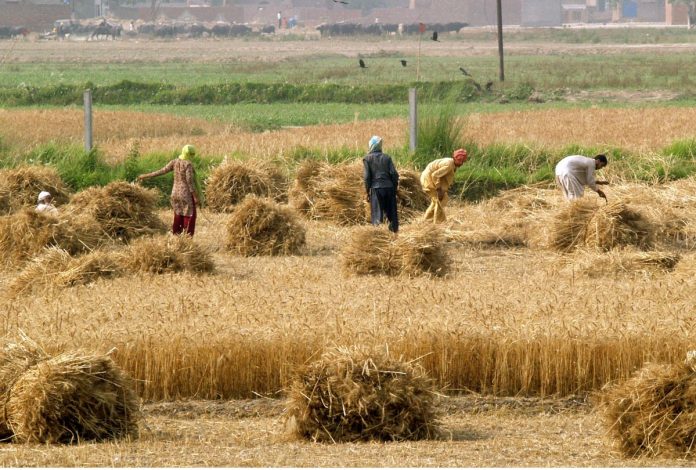LAHORE: Despite placing agriculture sector development at the forefront of its development agenda, Punjab government could not give attention to basic components of Agriculture Growth Strategy announced in 2013, highly placed agriculture department officials confirmed.
Punjab government had set its agenda of enhancing agricultural productivity by announcing “Punjab Growth Strategy 2018” in 2013, by substantial improvements in the quality of agricultural research, improving agriculture extension and education, better on-farm water management, improving the quality, availability and use of agriculture inputs such as seeds, fertilisers, pesticides, machinery and credit.
However, follow up documents indicate that agricultural sector is at a critical junction now that self-sufficiency in wheat has been achieved but achieving food security has been longing reinforced sector policies, investment priorities and public expenditures. Important considerations for growth for the sector include; rapid shift to high-value agriculture products, a significant, yet largely unexploited, a comparative advantage for a number of these products providing opportunities for generating export revenues and creating jobs and ensuring the enhanced resilience of agricultural production systems to climate change.
However, the agriculture sector remains a key contributor to Punjab’s economy but growth is lagging and hovering at just 3 per cent. Data shows that agriculture growth fundamentally is on a declining trend, from 3.3 per cent over the last decade to below 3 per cent during 2011-2015 and negative growth in fiscal 2016 (-0.18%). Both crop and livestock productivity is low and yield growth is largely flat. After a weak performance in fiscal 2016, the agriculture sector picked up and grew at 3.5 per cent in fiscal 2017 due to better cotton, sugarcane, and maize crops. However, improvement in integrated water resources planning, governance, and resilience is immediately required.
The government also targeted on creating better value chains by creating and preserving value at the farm level and improving connectivity of farms with markets, promoting high-value agriculture, better use of energy for agriculture, improving land resources and environment, by tackling water logging and improving soil quality and mitigating the impact of climate change. Also by increasing the area under cultivation, implementing critical regulatory and institutional changes to improve the business climate in agriculture and facilitate the private sector to establish agriculture markets.
However, documents available with Pakistan Today indicate that agriculture growth in Punjab is held back primarily by significant intervention by the Punjab government in both input and output markets, and a pattern of public spending on agriculture characterised by domination of subsidies, estimated at $ 1.5 billion in Punjab for fiscal 2017 or 3 times the regular investment allocation for agriculture in the provincial Annual Development Program (ADP).
Punjab government had shown commitment to transform the agriculture and rural sectors, recognising the increasing productivity with a focus on supply chain development and value addition but would require improving competitiveness in agriculture marketing and trade, however, a conducive climate for private investment is yet to be achieved.
The government passed a revised Seed Act in 2015 and produced a draft Draft Plant Breeders Act in 2015 and a revised Produce Marketing Act in 2012. Moreover, the government is implementing a considerable rural roads program and aims at strengthening rural institutions through the Punjab Rural Support Program. Whereas documents show that the subsidies are of a regressive nature and generate significant negative environmental externalities, and are nearly exclusively focused on major crops rather than high-value agriculture (HVA). Other causes include the limited adoption of modern technologies, poor service delivery, inefficient water delivery and pricing, and poorly functioning agricultural markets. In addition, current policies create strong disincentives to diversify.




